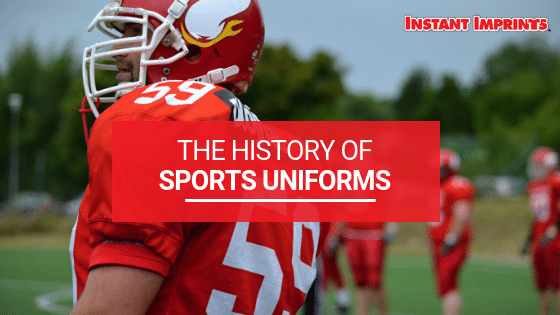The History of Sports Uniforms
Sports uniforms are the tried-and-true way to showcase the tenacity of your team. They represent your team’s values and spirit, and may even strike fear into the hearts of opponents. Let’s take a look at the history of some of the most popular sports uniforms so that we can understand what makes them such powerful tools for team spirit.
Football Uniforms
In the early years of American football, uniforms weren’t around, but players dressed in coordinating colors with their ordinary clothes. They already understood that the way a team dresses can unite them—in fact, this concept spans back to our tribal roots. In the 20th century, uniforms began to be more protective, due mainly to the harsh weather of the northeast. Leather, thick wool and cotton were used to keep players warm while giving them another layer of armor.
In the 60’s, the emergence of televised games and the introduction of the American Football League (AFL) brought a new wave of creativity and color to the backs of players. The San Diego Chargers sported an iconic lightning bolt, and the Denver Broncos wore an intense orange. This high-profile branding would continue to this day, when uniforms are regularly refined to keep up with the latest trends.
Soccer Uniforms
In the Victorian age, soccer players would wear colorful scarves to distinguish themselves, but otherwise, uniforms were more of a free-for-all. Toward the end of the 19th century, soccer fans demanded that players start sporting a more uniformed look. In 1874, Samuel Widdowson made the first shin guards out of cricket pads. Initially lambasted, these shin guards eventually became an integral part of the soccer uniform. In the 20th century, soccer uniforms caught on as worldwide symbols of national and team pride.
Baseball Uniforms
In the 19th century, baseball uniforms would be based on what position a player played, rather than the team they were on. Bowties and striped shirts were used, but the garb was soon ridiculed by players and fans alike. Around 1930, numbers started appearing on jerseys to differentiate players. In the 50’s numbers were added to the front, and a decade later names would be on the back of jerseys as well. Today, baseball jerseys are a worldwide phenomenon, and teams often release new jersey designs to sell to fans.
Hockey Uniforms
In the old days of hockey, players wore sweaters and thick socks. Team uniforms were not that differentiated—the players knew who played for which team. This all changed in the 20th century when teams began to wear bright, contrasting colors. Thus, the iconic jerseys that we know today were created as a way to stand out from the other team and boost morale. More recently, teams started wearing dark jerseys while playing at home and light jerseys when away, but this color distinction is known to flip back and forth throughout the seasons.
Now that you know some about the history of sports uniforms, you can be a part of the future of them. Stop by an Instant Imprints® near you to start your next team uniform project. Our Image Experts are happy to help you craft the perfect uniform for your team—all done in-house at your local center. The result is a quality uniform that unites your team. Bring your team to the next level with Instant Imprints!


